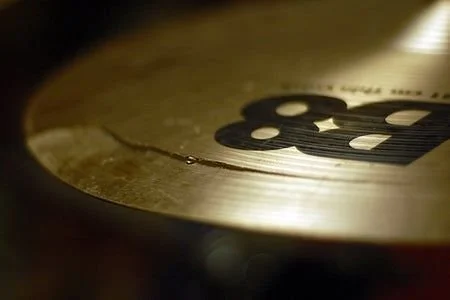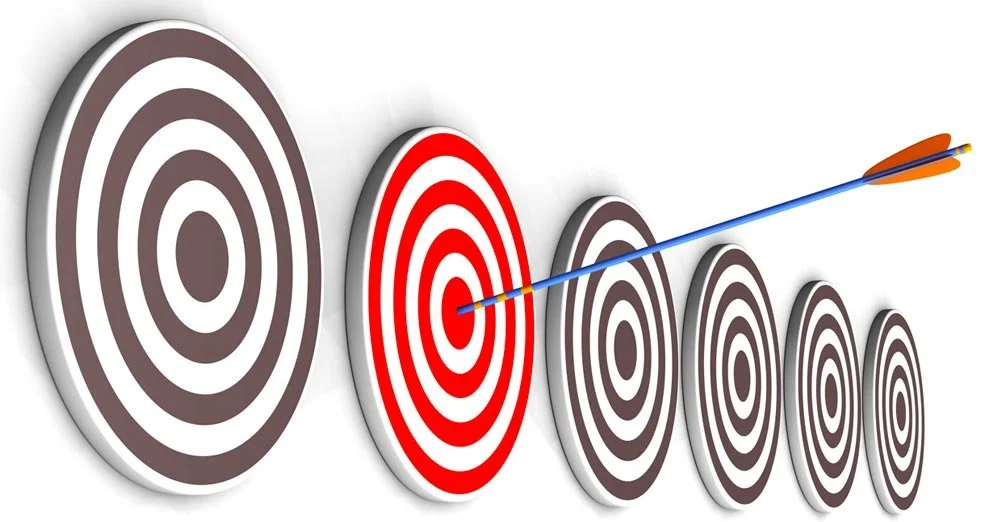Richard Best - Drum Yoda
A highly rated technique is pickle juice. The process calls for covering the cymbal with the juice and a dash of salt. Then you just watch the magic happen -- seriously, this will turn your cymbal green pretty fast. Apparently pickled onion juice works best.
We are all individuals, and what works best for one may not work for another. But in general, you can assume that the techniques you see the better players using are some of best practices available. You just need to find the ones that work best for you.
I put this exercise together to get my shoulders moving a bit better.
The sweeps are done with the same hand from tom to snare or snare to
tom.
It’s a phenomenon called Limb Assistance. That’s when one limb is able to perform better when it’s partnered with another limb.
The trend toward smaller bass drums was driven as much by portability as sound. Elvin Jones settled on an 18" bass drum because it fit into a cab nicely (so I’ve heard).
So you pack your bags, load up the drums and head for the big city -- just as countless other aspiring players have done. And you’re immediately faced with the more established players, the ones who really are the big fish in this bigger pond.
my life, apparently. It turned out to be a lick that I’ve been using for years. Useful, but hardly life changing ... and after such a great build-up.
So, if one sticking pattern is so amazingly useful, why bother to learn more? Well the key word here is ‘learn’. There are some stickings that we want to commit to memory as solidly as we can. These are the workhorse stickings. They're the sounds and patterns we rely on day to day. Then there are stickings that are meant only as exercises
It was an after-hours open stage club in the heart of the jazz district, and our budding jazz band had arranged to play a set -- our first venture outside the practice room. The resident drums were just awful.
Since I decided to come out about my hearing issues, a lot of people have asked me for some insight. It seems I’m not the only one who has paid a price for playing too loud, too long and too often.
Most companies will guarantee a newly purchased cymbal against certain types of breakage, but it ends there. If a player breaks a replacement cymbal, all love is lost and the cymbal will not be replaced. The rational is that the owner/player must be doing something wrong or just plain abusing their bronze.
I'm So Confused
And so you should be. Options you may hear about bearing edges include: round-over, 30 degree, 45 degree, dual-45, reverse 45, 45 with round-over, bull-nose, baseball bat, vintage round-over. There are also different theories, applications, claims, boasts, and myths.
One night, while sitting at a club not far from where I lived, one of my favourite local players came off the stage and made his way to my table. He was not his usual smiling self, and as he sat down he said, “Some people just got nothin’ to say.”
The coiled-steel snare wire is a wonderful invention, and a huge improvement over, uh, animal parts. But making it happen required the simultaneous invention of the snare End Plate and its introduction opened a can of worms.
All Crotchety
The traditional grip fulcrum will always be in the crotch of the thumb and first finger. Hold out your left hand (unless you're a lefty) as if you were going to shake someone's hand and put your stick firmly in the above-mentioned crotch.
Buddy Rich said it well enough: "Be on time, wear a clean shirt and swing your ass off!” Despite Buddy's penchant for homely sweaters, his advice goes a long way toward spelling out the expectations (the basic requirements of the job) of being a pro, or at least desirable. I used to tell my business students something similar: Show up on time, wear the right clothes, and do what you were hired to do to the best of your ability.
I am a staunch disciple of renowned drum teacher Jim Blackley. His death in 2018 at the tender age of 86 silenced his voice, but it needn’t cut us off from his legacy and extraordinary teaching.
Yes, we've preserved the traditional functions, but nowadays we prefer to do more with our instruments.
Faster Still!!!
When a young drummer asks about the best way to develop speed, the usual answer is “practice slowly”. And no, that's not an oxymoron. Your ability to play fast is 100% determined by the amount of control you have over your limbs. And the best way to develop control is through … wait for it … slow, regular, mindful practice.
just how do you decide whether you are going to do a job when there's no money to be had. In short, WIIFMAMB (What's is in it for me and my band)
A few weeks later, as I practiced, I was intrigued with not only how smooth my stroke had become, but also how much speed I'd achieved in a relatively short time. And the key component to this admirable accomplishment? I didn't pay attention.
4-Way Independence Rules
Our limbs typically cannot act independently, and so we must train them to co-ordinate their actions as a team. We call it independence, but what we're really talking about is “co-ordinated interdependence”... the limbs are co-operating and not acting independently.
Of course there are no rules, other than just do it. But there are good ways to practice and not so good ways. My goal for practice time is that it will invariably lead to the development of sound playing and sound playing habits. And it has to be fun.
Recognition vs. Recall
The goal is not to memorize the entire tune and arrangement. We just need to be able to identify and recognize the various sections as they come along. As long as we can follow the tune, the rest is just a case of getting organized. I like to develop a good understanding of the 'landscape' and leave the details until later. If I were to focus on the drum breaks, for example, I’d miss a lot of important information.
One thing that I always admired about Buddy Rich was the way he set up figures. He had a way of announcing and drawing attention to horn lines that was absolutely beautiful.
We’ve all at one time or another been advised to "just listen” and we would be told the answer to whatever it is that’s is confusing us..
Micro Practice
We do ‘micro practice’ all the time. We work on a single thing: single strokes, double strokes, lines from Stick Control and the like. Why? Because it works. Reducing our focus to a single item reaps big rewards. When learning a new figure, I will often take a 2-beat or even a 1-beat section and work on it exclusively. Then, when I tackle the whole thing, I’ve got a good handle on each part.






























It’s an old joke: How many drummers does it take to change a light bulb? The standard answer is three: one to change the bulb and two more to discuss how Steve Gadd would have done it.